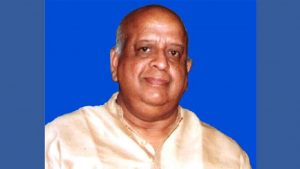 Chennai/NewDelhi: TN Seshan brought back faith in the Indian electoral system at a time when Indian elections were synonymous with booth rigging and misuse of government machinery.
Chennai/NewDelhi: TN Seshan brought back faith in the Indian electoral system at a time when Indian elections were synonymous with booth rigging and misuse of government machinery.
The no-nonsense Seshan, an IAS officer of 1955 batch from Tamil Nadu cadre, managed to stamp his authority on the country`s electoral system during his term as the country`s 10th Chief Election Commissioner from 1990 to 1996.
His strict commandments were: no bribing or intimidating voters, no distribution of liquor during the elections, no use of official machinery for campaigning, no appealing to voters` caste or communal feelings, no use of religious places for campaigns and no use of loudspeakers without prior written permission.
He also enforced the Model Code of Conduct, strictly monitored limits on poll expenses, and cracked down on several malpractices like wall graffiti. The issuance of Voter IDs for all eligible voters came into being under his strict watch.
While he endeared himself to the citizens by cleaning up the elections of the blatant manipulative tactics employed by political leaders, in the process he also ended up offending politicians with his iron-clad instructions.
Appointed by Prime Minister Chandrashekhar as the Chief Election Commissioner of India, Seshan would always be remembered as a shining example of what a CEC should be.
He had earlier served as the 18th Cabinet Secretary of India in 1989. In 1996, he won the Ramon Magsaysay Award. Seshan even contested for the post of President of India in 1997 and lost to K.R. Narayanan.
Born on December 15, 1932 in Palakkad, in then Madras Presidency, now in Kerala, his full name was Tirunellai Narayana Iyer Seshan.
Seshan, who passed away on Sunday, at the age of 86 at his residence in Chennai, had once told an interviewer. “I had never conducted an election. I went with two principles: zero delay and zero deficiency.”
His wielding the big stick worked. In the 1994 elections, in Karnataka`s Gulbarga district, more than 20 cases were registered against candidates for not filing daily expenditure reports.
In another place, three officers were suspended for covertly aligning with candidates. In all constituencies, candidates had to furnish lists of vehicles used for electioneering and the returning officers had to check the meter readings to tally these with the daily expenditure statements.
He would stagger the voting to deploy additional forces which reduced the risks of booth capturing and violence near polling booths.
Under his strict watch, in the 1993 elections, in Uttar Pradesh, booth capturing count fell to 255 – from 873 in 1991. The number of polling day killings also fell from 36 to three. The number of constituencies in which polling had to be suspended or deferred, also dipped to three compared to the previous 17.
Money and muscle power were not the only things that Seshan tried to curtail. In all states, dry days were declared six days before polling.
In the 1994 assembly elections to four states, he deployed 150 election observers to ensure that rules were adhered to strictly. He also deployed 120 audit observers in Andhra, 116 in Karnataka, 60 in Sikkim and 40 in Goa to monitor the election expenses of each candidate.
In the 1996 general elections, the Election Commission deployed 1,500 observers – of three per constituency – for monitoring the elections. Polling stations were run by around 1.5 million state employees, while over 600,000 security personnel were deployed. Some 300,000 people were placed in preventive detention, including 125,000 in Uttar Pradesh, and 59,000 in Madhya Pradesh, where 87,000 firearms were also seized, according to reports.
In 1994, in a move that sent shockwaves through the political establishment, he denounced the then Welfare Minister Sitaram Kesari and Food Minister Kalpnath Rai for attempting to influence voters, and asked the then PM to remove the two from office. There was talk at the time whether the CEC had overstepped his brief by offering such unsolicited advice to the government.
He was awarded the Ramon Magsaysay award in 1996 for “his resolute actions to bring order, fairness, and integrity to elections in India, the world`s largest democracy. In asserting the authority and independence of the Election Commission, Seshan locked horns with India`s Supreme Court and has feuded bitterly with the country`s politicians, leading to more than one attempt to impeach him.”
Interestingly, both Seshan and E. Sreedharan, former DMRC chief who is popularly known as the Metro Man, were classmates at BEM High School and Victoria College in Palakkad.
Both were eligible to study engineering in Kakinada (Jawaharlal Nehru Technological University). While Sreedharan decided to go ahead, Seshan decided to join MCC (Madras Christian College).
He later went to study at Harvard University on Edward S. Mason Fellowship where he earned a master`s degree in public administration.
Bureau Report
Leave a Reply